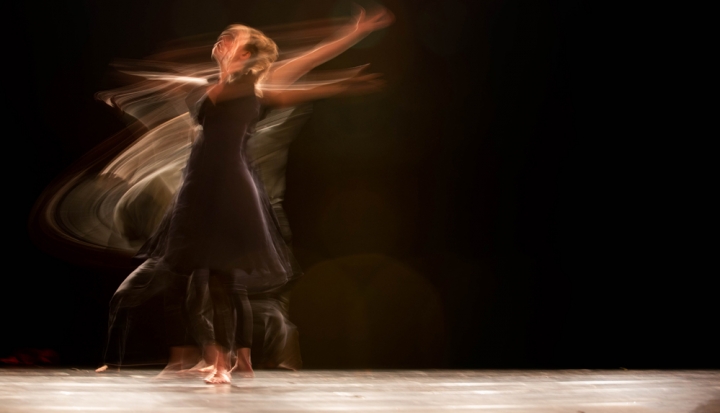In our daily rush through life, we so often neglect the body’s wisdom. We work through fatigue and illness, pushing our bodies and feeling frustrated when they don’t keep up. Or we look at our physical selves with disdain when parts don’t measure up to some external standard (which is always designed to sell us something).
The Christian tradition does have an unfortunate legacy of body denial. And yet, the very contemplative practices which are so nourishing for our souls can also be directed toward our bodies as a way of celebrating the gifts of our embodied beings. If we believe that God became flesh and sanctified it, said all of creation is so very good, how might we take the incarnation seriously by entering into intimacy with our own bodies?
Breath and spirit
In the first creation story of Genesis, the Earth is a formless void and the wind of the Divine sweeps over the waters. In the second creation story, God is described as gathering mud and clay from the Earth and then breathing the first breath of life to create human beings. From these stories of our beginnings we are given insight into a Creator whose very nature is intimately connected to wind and breath.
We are animated and enlivened by the breath that is breathed into us.
In Hebrew, the word for breath and spirit are the same, ruach. In the gospels, Jesus breathes on the disciples (John 20:21-22) and at Pentecost the Spirit comes as a mighty wind (Acts 2:1-4). It is clear that breath is considered part of the fundamental nature of God. As human beings, our breath sustains us moment by moment, even when we are completely unaware.
This is the incarnation—to know God as intimately moving through our physical being. The breath is a beautiful place to begin with this awareness. Breath was central to the practice of the desert monks. We have texts which describe their practice of the Jesus Prayer, where the breath is slowed and a prayer is said in coordination.
Usually the first part, “Lord Jesus Christ, Son of God,” was said on the inhale, and the second part “have mercy on me a sinner” was said while exhaling. Praying with each breath was one of the ways they could follow the biblical call to “pray without ceasing.” (1 Thess. 5:17)
Create a breath prayer
Pause for a moment and notice your breath without trying to change it. Track your breathing for a few moments, bringing a sense of wonder to this primal rhythm which sustains your life even you aren’t paying attention, while you are sleeping or eating or in deep conversation with a dear friend. The breath, like the heartbeat, is the ancient rhythm and pulse of life.
The breath is like an old and loyal friend with whom you are becoming reacquainted. As you inhale imagine the Spirit sustaining you moment by moment. As you exhale imagine yourself connected to all of creation through this great rhythm of breath. The great Jesuit theologian Pierre Teilhard de Chardin has a wonderful image of the “breathing together of all things.”
All living creatures are sustained by this life-giving rhythm and we are dependent on plants, trees, and other vegetation to transform the carbon dioxide we exhale into the oxygen we need to thrive.
Rest into this rhythm and listen for a word or phrase that you can connect to your in-breath and then to your out-breath. It might be something simple like “Breathing in, I welcome Spirit / Breathing out, I connect to all.” Or you might connect it to the scriptures, such as the line from Psalm 46:10 “Be still and know / that I am God.” Make a commitment to pray this breath prayer each day and see in what ways it brings your awareness of God closer.
Sacrament of the senses
The Catholic Mass often meets and inspires every one of our senses: the scent of incense rising, bells ringing, stained glass windows, singing songs, embracing another at the kiss of peace, eating the bread, and drinking wine.
I have always loved the Catholic idea of sacramentality, which means that physical things participate in and reveal the presence of the holy. The liturgy with all of its sensual dimensions is sacramental, the marriage union between two lovers is sacramental, the holy oil of anointing used in healing is sacramental, this bread and wine become flesh and blood is sacramental.
And then there are of course the more ordinary everyday sacraments. The sacramentality of our own flesh which allows us to be present in this world and receive its gifts through our senses.
When we read stories from the Gospels with our senses alert, we encounter Jesus immersed in a whole array of sensual experiences. Table fellowship was a primary way of marking significant events in the Bible. He is concerned with making sure people are fed, and as in the story of the multiplication of loaves and fishes, there is even an excess left over, as if to always reinforce that there is more than enough.
His first miracle was turning water into wine at the wedding feast was to make sure that the party was able to continue. His final ritual act with his disciples was to break bread and pour wine as symbols of his own body and blood. The way he reached out to others was through earthy pleasures of nourishment.
The root of the word savor comes from the Latin word saporem which means to taste and is also the root of sapient which is the word for wisdom. Another definition I love is “to give oneself over to the enjoyment of something.” When I give myself over to the experience of savoring, wisdom emerges. Savoring calls for a kind of surrender.
We have all kinds of stories in our minds about why we perhaps shouldn’t give ourselves over to enjoyment, whether out of guilt or shame or a sense of fear out of what might happen. Yet we are called to yield to the goodness of life, to bask in it. It is an affirmation and celebration of God’s creation and an echo of “that’s good” from Genesis.
Create a meal blessing
One of the ways we can practice this kind of intentional savoring is with our meals. So many of us are disconnected from the true nourishment our food can provide on a physical and spiritual level. We live in a culture of “fast food” where the motivation is to feed a physical hunger, but when the body is not nourished and the soul hunger is left depleted, we never feel satisfied.
Before you eat, pause and breathe to bring yourself fully present to this meal, to this act of nourishment. Allow yourself to savor the meal fully with each bite. Take in the taste, texture, aromas, and the beauty of the food. Light a candle and play some quiet music if that would support your experience.
Consider writing your own meal blessing to read before you sit down to eat each day. Bless the food, those who grow it and prepared it, bless the source of all nourishment in whatever words you feel inspired by. See if you might make one meal each day be slow and spacious and reverential.
Conclusion
Jesus’ humanity is described again and again in the Christian gospels. One of the last things he says in his life is that he is thirsty. He often goes away to retreat a while and renew himself for his ministry.
Even the resurrection narratives read during the season of Easter point to an embodied Christ who still bears his wounds, who is revealed in the breaking of the bread once again, who gathers an abundance of fish from the sea so that all may be nourished.
The breath and the senses can be two gateways to falling in love with our bodies, to begin to see them as the beautiful gifts of creation they were meant to be. These practices can help us to resist a culture of endless speed and productivity that encourages us to see our bodies as a hindrance rather than the place of divine encounter they are meant to be.
Image: Unsplash cc via Ahmad Odeh













Add comment